The New Sage X, The Technology Behind The Action

For weeks now I’ve been keeping the biggest secret in fly-fishing.
I feel very fortunate to be one of a few folks trusted with knowledge of the new Sage X fly rod. When a company like Sage asks you to keep your mouth shut about their new product, you know they are cooking something big. When I visited the Sage factory last month, to see the X, I could feel the electricity in the air. I’ve known these guys for a long time and I’ve never seen them so excited.
Today the cat is officially out of the bag. There is a new family of rods coming from Sage. The X series is built on a new proprietary technology platform and is very different from rods of the past. I have said before that I think this period in fly rod design will be remembered as a great leap forward and Sage is working very hard to prove me right.
If you saw my video about testing recovery rate, you already know some of the basics. Sage has a unique workflow in its R&D lab. They are the only fly rod manufacturer I know to employ a materials engineer. Steve Greist is the man behind the curtain at Sage and I have to say his methods and his materials are pretty impressive.
The X is the next generation of fast action fly rods from Sage. If you are a dyed-in-the-wool glass head, it might not be for you. But, if you like fast action rods, especially ones which are extremely light and responsive with buttery smooth actions, you’re going to love the X. Yep, it’s expensive but it’s a damned fine fly rod and I expect they will sell every one of them.
I got to see, or I should say hear, the resonance test on the new X technology blanks and the material is significantly faster than the technology in the One rods. You might expect it to be a broom stick. I kind of did, but it’s far from it. The 9’ 5wt X that I’ve fished feels much better to me than the One.
Looking at a cross section of the blank under a microscope, you can see
Read More »Sunday Classic / Stocked Brook Trout – Strip it, Skate it, Swing it
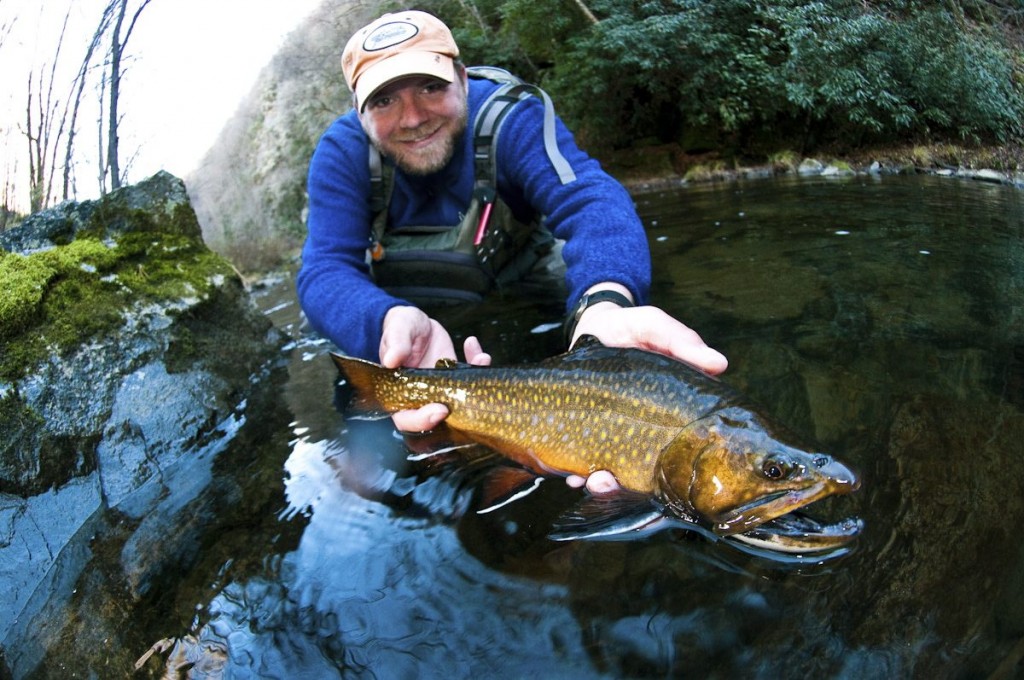
I’m very fortunate to have a great trout stream near by that operates a delayed harvest program.
Catch and release fishing by artificial flies only, starting in the fall every year, and runing into the early summer. I love visiting this trout stream because the DNR stocks big male and female brook trout, some of which, can push well over twenty inches. To consistently catch these beautiful brookies, I usually have to experiment with different types of flies and presentation methods to find out what’s the best option for the day’s fishing. Sometimes all I need is a simple drag free drift with a dry fly or nymph to catch them. Other times, the brook trout will completely ignore my dead drifted flies and I’m forced to impart extra action and movement on my flies to trigger bites. When I can’t get stocked brook trout to rise to my dry fly or take my nymphs dead drifted, I’ll then try fishing tactics like stripping a streamer, skating a dry fly or swinging a tandem nymph rig. For some reason, the added action and movement, often will trigger reaction strikes from stocked brook trout that have lock jaw. Moving your fly upstream, and causing it to make a wake, be it a dry fly or wet fly is another technique that can work wonders. Everyday can be different, so it’s important that you figure out what kind of presentation and type of fly the brook trout want to help you find success. Now that I’ve gone over how movement can trigger bites with the stocked brook trout, let’s talk about each in a little more detail.
TECHNIQUE #1 – TRY STRIPPING STREAMERS WHERE THE BROOKIES ARE LOCATED
I’ll never forget a day on the water with my good friend Joel Dickey several years ago, where he landed two brook trout well over 22 inches with a streamer. They were the biggest stocked brook trout I had ever laid my eyes on in the Southeast, and the only thing that proved effective for catching them that day, was retrieving a streamer across their noses erratically. Try fishing brightly colored streamers that incorporate flash for stocked brook trout. Multi-colored streamer patterns with yellow, orange and blue have served me well over the years. Take an attractor approach when tying or purchasing your streamers, you don’t need to fish natural looking streamers that resemble the local sculpins, crayfish or baitfish. These can work also, but I’ve found streamers that are colored loudly get the most attention. Your streamers don’t need to
Read More »Saturday Shoutout / My Old Man
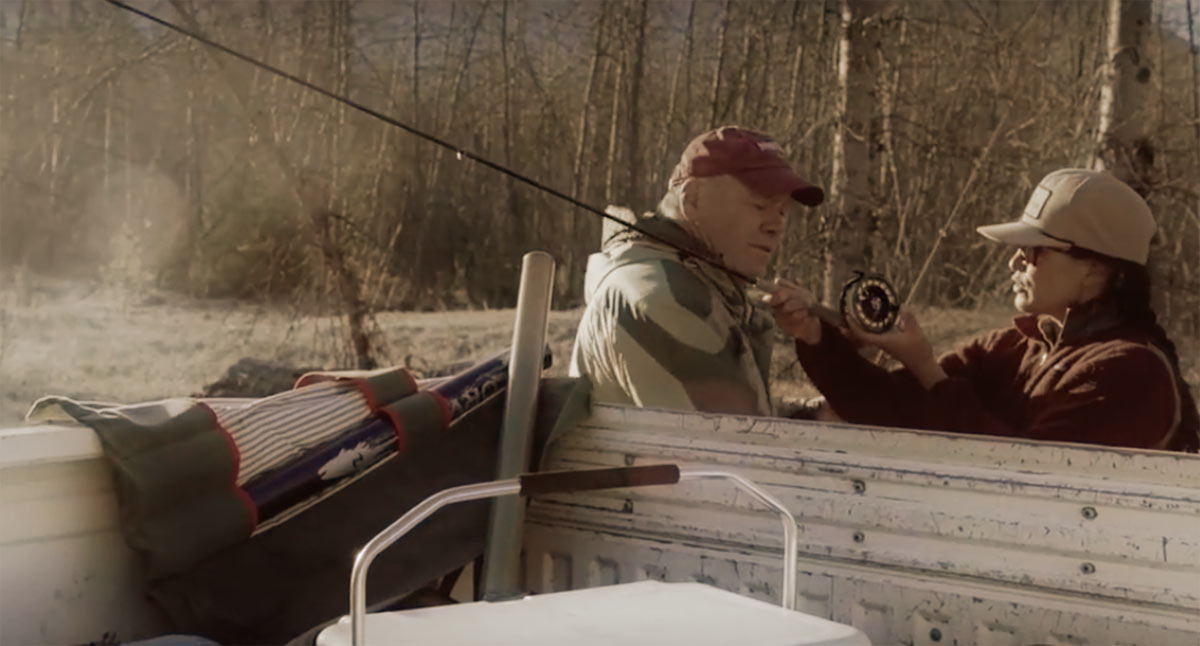
With Father’s Day right around the corner, here’s a great story of a father and daughter connecting on the water.
Fly fishing guide and TV host Hilary Hutcheson draws together the generations of her family by teaching her father to fly fish.
Hilary Hutcheson’s father, Dave, has dedicated his life to the outdoors. After spending decades as a Park Ranger at Mount Rainier National Park, he retired to Montana’s Glacier Park and all but retreated from the wild activities that defined his career. But Hilary is changing all that, by taking her father out on the water to learn the sport that became her life’s calling – fly fishing.
Read More »What is Recovery Rate and How Does It Affect Fly-Rod Action?
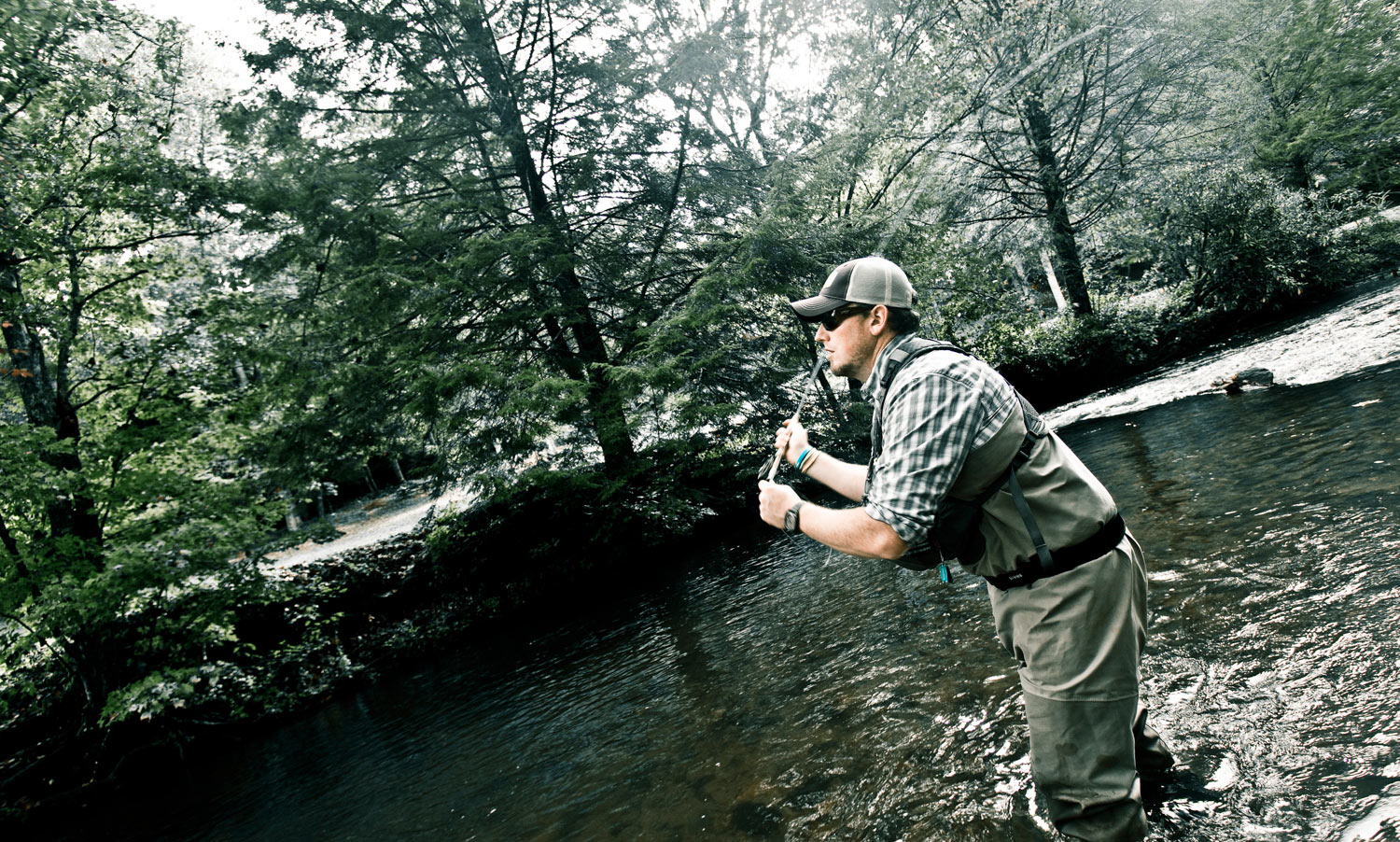
When we refer to a fly-rod as being fast or slow, what we are talking about is recovery rate.
Recovery rate simply means how quickly does the bent rod return to its natural, straight position. This recovery rate is inherent to the rod and can be observed whether the rod is under a load, as in casting a fly line, or just getting a good wiggle at the fly shop. The wiggle, however, is not a good test of recovery rate and even casting a rod it can be hard to judge the recovery against another rod without being pretty thorough about it.
So how do you quantify the recovery rate of a fly rod?
One method which is informal but better than the wiggle, is to grip the rod in your hand and punch that hand into the palm of your other hand. This gives the rod a very positive stop and if you pay attention you can judge how long it takes for the rod to flex down and back up. It works but is still pretty unscientific.
Steve Greist of Sage showed me a very cool trick for judging recovery rate and I asked him to share it. Steve has a pretty unique job at Sage. He is a materials designer and a pretty impressive dude. His job is to create new ways of combining carbon fiber and resins to create new materials, and those materials, more than anything else, determine recovery rate. When you hear about Sage’s Konnetic technology, thats what they are talking about, Steve’s material. He works directly with the companies who produce the fibers and his lab produces materials which sometimes go on to be used by companies like Boeing.
So to judge the recovery rate of his material, Steve does something interesting. He drops it. He makes untapered blanks and drops them on a hard surface. The impact sets off a vibration in the blank. This vibration is transferred into the air as sound waves, just like a guitar string or wind chime. The higher the pitch, the faster the recovery rate. Simply brilliant.
So if you want to judge the recovery rate of a fly rod, try dropping a mid section on the counter top at the fly shop. I’m not suggesting you simply buy the rod that sounds best but you will gather some good information to help you decide.
Here’s a question for you to think about. What was I doing in the Materials Lab at Sage? You will be finding out soon.
WATCH, AND LISTEN, TO THIS VIDEO TO SEE STEVE GREIST PERFORM A RESONANCE TEST IN THE SAGE MATERIALS LAB.
Read More »Three Tactics for Tougher Terrestrials
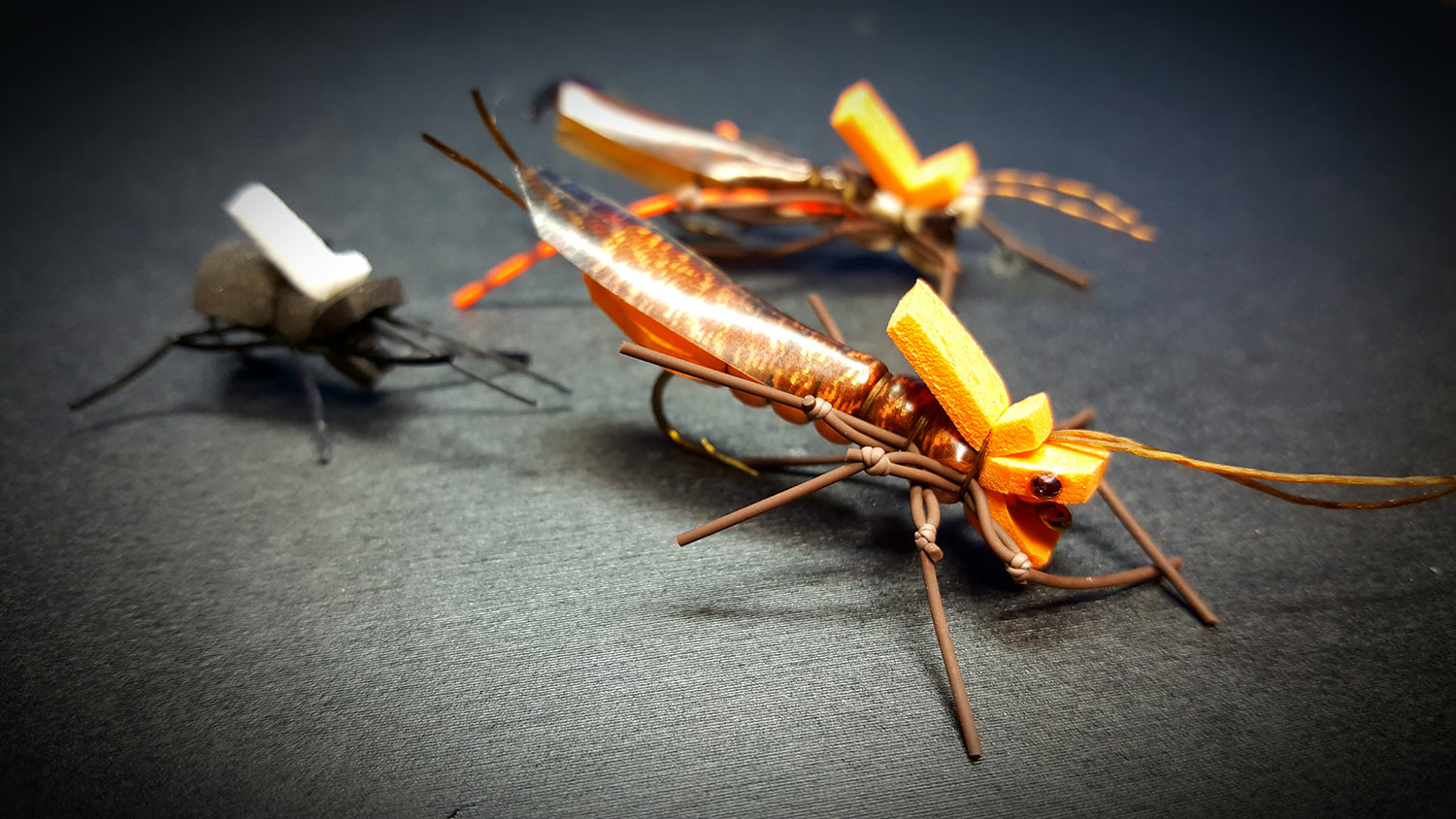
By Bob Reece
Large foam terrestrial fly patterns have exploded in popularity over the past several years. Their intriguing aesthetics, all day buoyancy and ability to elicit violent takes have earned them a place in fly boxes worldwide. However, the durability of these high floating flies can sometimes become an issue. The three following tips can help you beef up the longevity of your favorite foam offerings.
The use of super glue in the creation of foam terrestrials exponentially increases their lifespan. When tying these patterns, I follow two rules of use. I apply super glue wherever foam is attached to the hook shank and when two foam surfaces contact each other. The glue applied to the shank inhibits the pattern from twisting loose as it is used. Glue used to bond two pieces of foam together reduces the stretching of the foam. This stretching leads to tears and cuts that progressively weaken the material. In addition to this, a small drop can be placed on each of the tie in points for any rubber legs and antennae. This prevents them from being dislodged when setting the hook and fighting the fish.
UV clear coats have countless uses in the process of fly tying. Their cured surface provides an abrasion-resistant barrier for the underlying material. Several of the terrestrials that I tie incorporate Wapsi’s Loco Foam on the underside of the pattern. Brushing on a thin layer of UV cure prevents damage to the metallic covering, as well as
Read More »Saltwater Fly Fishing: 11 Tips for Presenting Your Fly To Tarpon
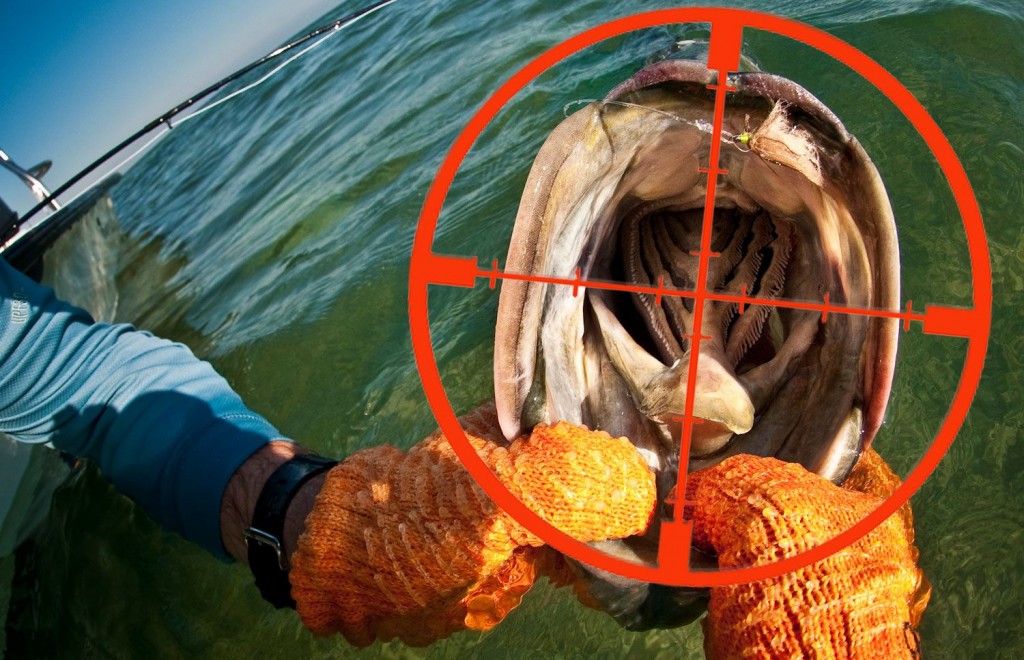
Anyone that’s fly fished for tarpon has probably experienced how easy it can be to present the fly incorrectly. If you miss your target, even by just a little bit, it can drastically lower your chances for getting a tarpon to eat. Cast the fly too close, and the tarpon will spook. Don’t lead the fish enough, and your fly won’t get down to the tarpon’s depth. Cross the fish at the wrong angle, and your fly will be moving towards the tarpon unnaturally, and it will spook. The list goes on and on.
Bottom-line, there’s a very small margin of error bestowed to anglers fly fishing for tarpon. You have to execute everything damn near perfect to put the odds in your favor, and even then, you aren’t guaranteed squat. Here’s the problem. The average angler that travels to fly fish for tarpon is not usually educated on how to read and respond accordingly to different fishing scenarios on the flats. A lot of this has to do with lack of experience and time on the water. If you find yourself falling into this category prior to fishing, you should take the time to have your guide explain how you should handle common fly fishing situations that you’re likely to encounter. As a kid, the same preparation was used by my Dad to walk me through how to make a clean kill shot on a deer. I can hear him now, “If the deer is faced in this direction, I want you to put the crosshairs here”. He must have gone over a dozen different scenarios during the drive up to the deer camp that first year. By the time he was done talking, I felt like I had been hunting for years and I was ready for any situation. It’s no different fly fishing for tarpon. Taking the time to have your guide walk you through different fishing scenarios beforehand will greatly increase your tarpon insight, fishing awareness and get you prepared for the real McCoy.
The second thing anglers should do to increase their success tarpon fishing is have a solid game plan or checklist that they’re willing to stick to on the bow. It must run like clockwork, flawlessly and consistently every time to ensure opportunities aren’t missed out on. The game plan should begin at the angler ready position, with fly in hand, and end with a well-calculated presentation cast. Success all boils down to angler aptitude and experience. The more you have of it, the better the chances will be that you’re going to make the right calculations and decisions on the water when time comes.
Read More »The Winston B3 Plus, Is this A Turning Point?
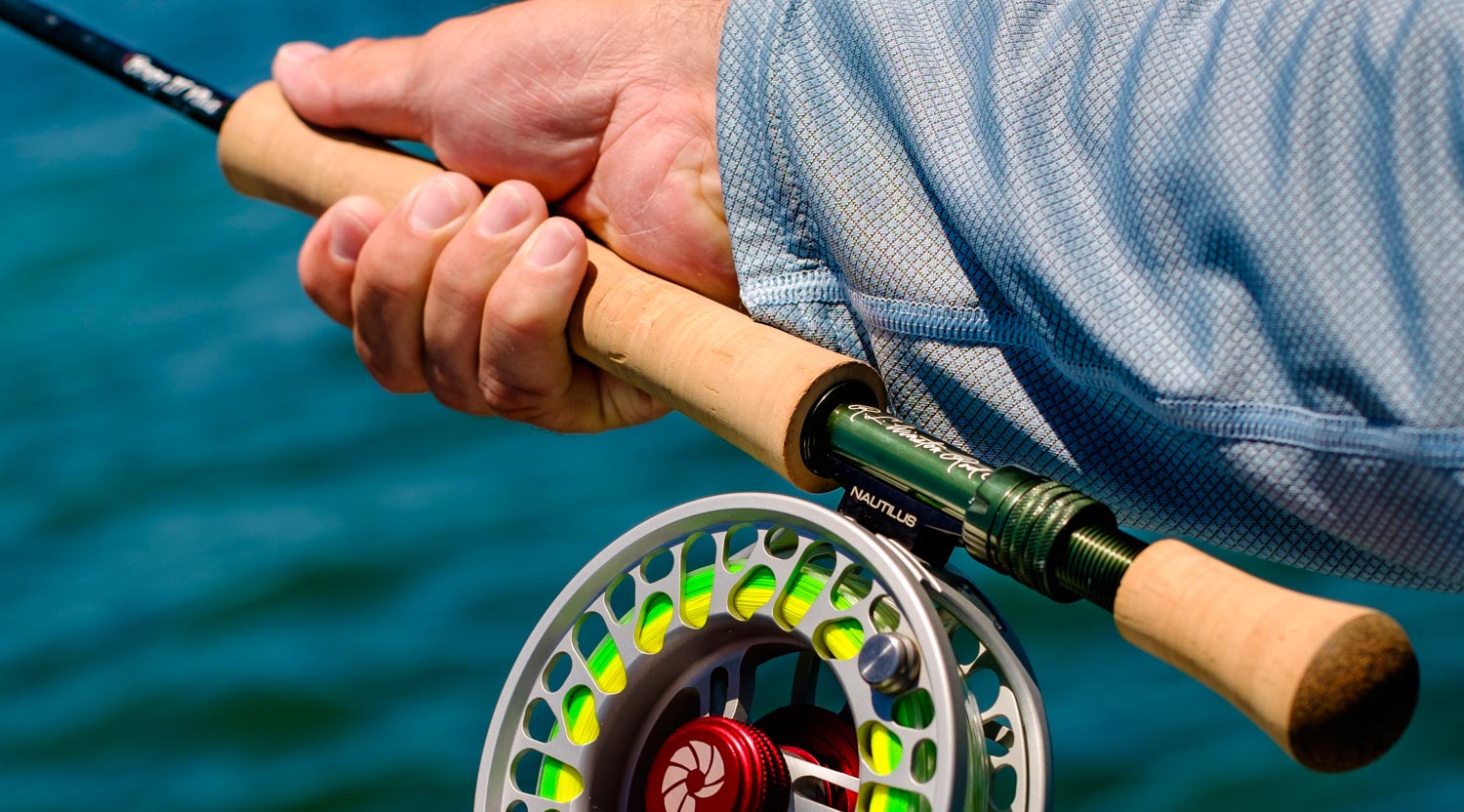
I have loved Winston fly rods since I cast one for the first time, but this is something completely different.
I just got my hands on a Winston B3 Plus 11 weight and took it to the Florida Keys for tarpon. I only own a couple of Winston fly rods but hey have been among my favorite trout rods for a long time. When it came to saltwater, however, I have always favored rods with a much faster action. Anyone who fishes the salt will no doubt understand.
Winston has become synonymous with the word “feel.” Largely thanks to their own marketing, and “feel” has become synonymous with “slow.” For years that has been fairly accurate, but recently rod designers have taken advantage of new technologies the make rods with both powerful actions and feel. It’s a very exciting trend and think history will remember the rods of this era as a turning point in rod design on par with the shift from fiberglass to graphite.
The Winston B3 Plus is a classic example. This rod is as good as any fast action rod on the market today. Better, in fact, than a great many. I believe it’s a turning point for Winston. A watershed moment when a classic brand with one of the most revered histories in fly fishing stepped firmly into the future.
I have a pretty nice selection of 11 weights. 11 is kind of a magic number for me. It is the perfect rod weight for tarpon, in my opinion, but it’s also the point where rod designers and casters alike start to struggle with castability. While a 10 weight is an easier rod for most anglers to cast, and I know a lot of anglers who fish them for tarpon, they don’t have the authority of the larger rods. As we move to the 11 weight, we have some serious fish fighting power, but the rod becomes more physically demanding to cast. I think you can tell a lot about a family of fly rods by fishing the 11. Everyone has a good 5 weight, a good 11 is a gem.
The B3 Plus
Read More »Taking An Epic Plunge

By Justin Pickett
No, not over my head into a cold river. Instead, I’m diving completely blind into my first rod build.
I’ve been interested in building a rod for some time, but the task has always seemed more daunting and tedious than I had patience for, leading me away from the idea. I’d still think about it from time to time, but I’d just always tell myself “Eh, I’ll do it someday.” I kind of likened it to fly tying. Initially you’d probably start out with a small kit and then graduate to new and more materials, or a better vise, if your interest in tying continued to develop. However, to me, it seemed as though there really wasn’t a great way to start “small.” Not mention the fact that I currently don’t have much room to place a rod jig or store rod building supplies. It could be that I’m just ignorant to more sensible and economical options that may be available, but, no matter, I still kept putting it off. Years have gone by, and I still haven’t tackled a build. I’ve checked off many other things on my fly fishing “to-do” list, which there are still many, but this one has made its way back to the forefront. If this sounds like you, then you’ll want to read on.
I finally decided that I was going to build a rod, and it didn’t take me long to figure out where I was going to start. Epic is a well-known name within the fiberglass world. They produce some amazing glass rods that have won the hearts of glass lovers the world over. Aside from building rods in house, and sending glass blanks across the globe, Epic also sells a “Ready to Wrap” kit. They advertise that, with this kit, they’ve “made the simply incredible — incredibly simple”, and I believe they’ve nailed it. They’ve taken the intimidating task of choosing the right items to build a fly rod and squashed it. On top of that, included is a detailed handbook filled with step by step instructions, as well as tips and tricks to help you along the path of building one of their amazing blanks, which range from a sweet 4WT on up to a wicked 12WT. It was a no brainer for me! Click. Ship. Done!
A week later my kit made its way across the Pacific and arrived at my doorstep.
The big, bold “Epic” logo staring me right in the face! I couldn’t wait to tear into the box and start building immediately! Approximately 3.2 seconds later I was staring at a beautiful collection of quality components worthy of any rod maker’s studio.
Read More »Sunday Classic / Getting Sharper Photos In Low Light
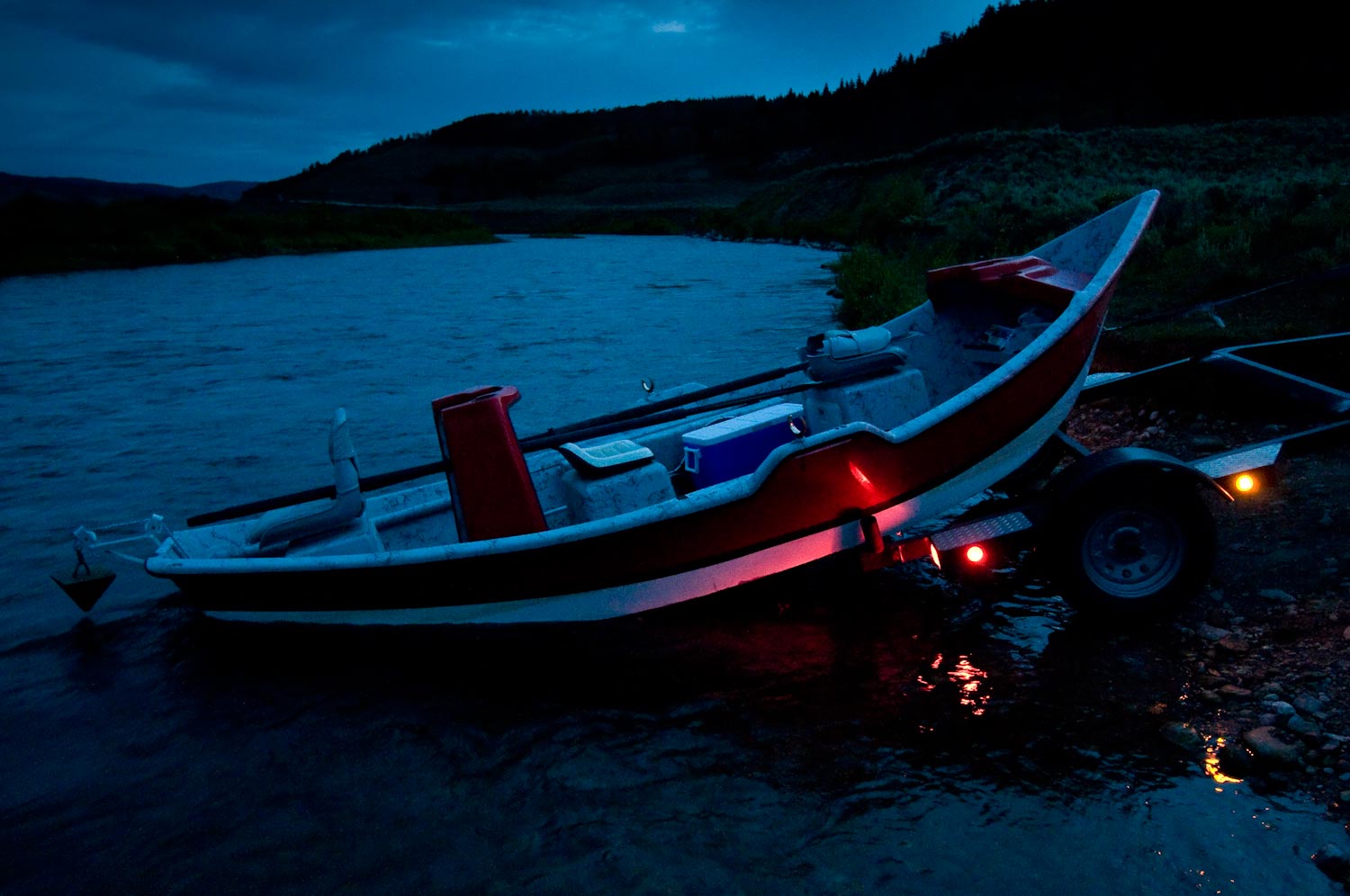
IT’S NO COINCIDENCE THAT WHEN THE LIGHT GETS PRETTY, IT ALSO GETS LOWER.
That is to say that like low water, there just isn’t much of it. Those early morning and late evening shots are beautiful but challenging. Low light means slow shutter speeds and, all too often, blurred photos. Here are some tricks I use to help beat the blur.
Check your ISO
Formerly known as ASA, the ISO setting on your camera adjusts the sensor’s sensitivity to light. Some cameras are capable of adjusting their own ISO. If yours is not, you will get better results by adjusting this setting for the existing light conditions. If you are in bright sun, a low ISO setting like 100-200 will give you sharper images with less noise. If you are in low light like dusk, a higher ISO like 400-800 will give you faster shutter speeds and minimize camera shake. Some high end DSLRs get good results as high as 3200. When you start using your ISO setting, it is important not to forget to readjust when conditions change. Eventually it will become second nature.
Use a fast aperture
The aperture, or F stop, controls how much light the lens allows into the camera. Faster, or wider, apertures (the ones with the lower numbers like 2.8) let in more light and allow higher shutter speeds. When light is low it’s best to select a faster aperture but be aware that your depth of field will be reduced. Pay close attention to your focus, you may have to choose what part of the scene you want tack sharp.
Get a good grip
The way you hold your fly rod effects you casting, right? The way you hold your camera matters too. Most people never stop to think about it but I remember being taught in school the proper grip for a camera. First off, all SLRs are
Saturday Shoutout / Tarpon Fishing is a Joke

Some days it’s all about keeping your sense of humor.
Anyone who has fished for tarpon will relate to this great piece of writing from Amberjack Journal. When you’re up against the silver king, some days you’re the kid and some days you’re the clown. And that’s about all there is to it.
Have a laugh at Amberjack Journal.
WHY TARPON FISHING IS A JOKE
Read More »